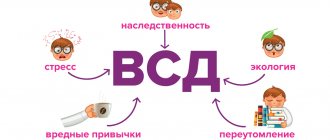What to do if a child is constantly capricious, protests, does not listen, throws tantrums and does not let his mother go for a single step?
A one-year-old baby pleases his parents with his new skills: he understands speech, and even tries to pronounce his first words; he gets to his feet and begins to walk. It would seem that this is the happiness of a mother - an “almost adult” person!
But before the parents have time to think that it’s time to relax a little, they discover that it’s as if someone has replaced their sweet, smiling and accommodating child with a capricious and completely impossible child.
What's happened? Is the child sick? Have you experienced severe stress? Or was he spoiled for attention? Most likely, the reason is different - the crisis of one year has come.
Better out than in
Tears contain cortisol, a stress hormone. When we cry, we literally release stress from our body. Tears have also been found to lower blood pressure and improve emotional well-being if you have a loved one for support (containment).
When your baby is on the verge of a tantrum, he is mentally ill - he is angry, upset or whining. You may also have noticed that his mood improves after a tantrum.
Crying can help your baby learn
Several years ago I worked as a nanny for a 5-year-old child. He was building a model from Lego, and suddenly he became hysterical because something didn’t work out for him. However, after hysterics, he sat down and successfully assembled the structure. I have seen many such moments when a child struggles and expresses his frustration emotionally and it helps him clear his mind and learn something new.
Research shows that in order to learn, a child must be happy and relaxed, and free emotional expression of their distress is part of this process.
Is it possible to leave a child alone so that he calms down faster?
It's better not to do this. Of course, if you know that the child can calm down without you, because... he will no longer have “viewers”, then this method can help. But there is a high probability that the child will perceive it as if he was abandoned. And even if he calms down, he will harbor a feeling of resentment or guilt (he is “bad”, that’s why he was abandoned).
Therefore, it is better to still be close to the child - maybe not pay attention to the hysteria, but to be close.
Then he will know that he was not abandoned - this is very important for him. So just stay close to him and follow the tips in this article! See also:
Get it as a gift! How not to infect a three-year-old child with infantilism. Learning to read masterfully. From the “king” to the “savage”
If you liked this material, please click on the button from facebook, vkontakte or twitter (located below) so that other people know about it. I will be very grateful! Thank you!
Your baby can sleep better
Sleep problems often arise because parents believe the best approach to tantrums and meltdowns is to try to avoid them. Outwardly, the child’s emotions are restrained, but they continue to boil inside. Just like adults, children don't sleep well when they're stressed or trying to process what's going on in their lives. Allowing your child to see his tantrum through improves his emotional well-being and can help him sleep well through the night.
What's going on with mom and dad?
As long as parents are dealing with an infant, questions do not arise: “Does the child listen?”, “Does he behave well?” etc. If a four-month-old baby cries, it means she needs to be fed, her diaper changed, or held. But no adequate adult would think of forbidding her to cry or punishing her for crying. The topic of “upbringing” comes up only closer to the year when the child becomes a “separate person” with his own free will.
The problem is that mothers and fathers are also not always ready for this important change in the baby. Often they still try to completely control his every move. The appearance of your child’s desires causes irritation, and sometimes shock: “Why doesn’t he listen to me? Is that possible?
In fact, there is no reason to panic: every child experiences a one-year crisis . This is a natural stage of development. The negative moments of growing up - whims, hysterics and protests - will sooner or later become a thing of the past, and the only gains that will remain with the baby are the awareness of oneself as a separate person from the mother, the ability to walk and talk.
You said no and that's good
Most likely, your baby had a tantrum because you said “no.” And this is good! Saying “no” gives your child an understanding of clear boundaries regarding acceptable and unacceptable behavior. Sometimes we avoid saying “no” because we don't want to deal with the emotional consequences, but we can firmly insist on certain boundaries while expressing our love, empathy and hugging the child. Saying “no” means that you are not afraid of the difficult, emotional side of parenting.
Your child feels safe when he shows you how he feels.
Tantrums are actually a big compliment to you, even if you don't realize it! In most cases, children do not use tantrums to manipulate us or get what they want. Often your child will perceive your “no”, but the tantrum is an expression of how he feels about it. You can firmly insist on your own and at the same time empathize with his sadness. Getting upset about a broken cookie or the wrong color socks is just an excuse to feel the love and empathy he really needs from you.
Features of children's tantrums
Due to a weakened nervous system, children are often capricious, expressing their dissatisfaction by crying, stamping their feet, etc. Hysteria in a child is a common problem, and it is important to approach it correctly.
A capricious child: the norm or a problem
Children's hysteria is a common occurrence. Even the most modest little ones, whose quiet behavior their parents cannot get enough of, can create scenes with screaming and crying. For parents, their baby’s behavior is always familiar, and they rarely notice any problems.
Only when their child’s hysteria begins on the street, in front of strangers, do they pay attention to the baby’s behavior, since the scenes created by the child can cause embarrassment in mom or dad. It's all about the obsessive thought that the hysterical crying of a toddler will give strangers the wrong opinion: these people are not raising their child that way.
Over the past 5–7 years, psychologists have begun to talk seriously about the problem of hysteria in children. The results of the research were surprising. Seizures affect more than 80% of children under 6 years of age, more than half of them are capricious constantly, 1–3 times a day, 2–3 days a week.
Psychologists are confident that it is not difficult to distinguish children’s tantrums from ordinary rare whims. The first appear suddenly, have a certain frequency and duration.
In addition to the usual crying and screaming, seizures are often accompanied by uncontrollable behavior when the baby harms himself (scratching his arms and body, banging his head against walls, etc.), and therefore has dire consequences.
It is important for parents to promptly identify the pathological condition of their own child, because, in addition to the risk of harming themselves, their behavior can also affect adults.
When a baby is hysterical with or without reason, many fathers and mothers are ready to do everything to calm him down. This is where the mistake lies. Parents themselves allow their child to manipulate them, which only aggravates the problem.
Causes of hysteria in children
The physiological cause of hysteria lies in the developmental disorder of children. As children, we were all impressionable, hyperactive, dependent on the actions of our parents.
A child, like a sponge, absorbs any information received during the day. But he still doesn’t know how to use it rationally, so any sudden noise, scandals in the family, scary fairy tale characters, and even being forced to eat an unloved dish lead to a stressful situation. The consequence of vivid impressions is hysteria with all its manifestations.
This reaction is a manifestation of self-defense, a way to relieve nervous tension during stress. But its reasons often seem funny to adults: the mother disappeared from sight, another child took away his favorite toy, an unfamiliar uncle appeared in the house.
This happens due to the fact that unpleasant memories associated with certain situations have formed in the baby’s subconscious. Parents often miss such important details.
To overcome frequent whims, adults should still pay attention to all the little things that can affect changes in the emotional state of their child. And only after identifying them can you work with the child’s emotional state, imagination and the child’s perception of the world.
Stressful state
The first and most common cause of tantrums is stress. From 4–5 months. In life, children are taught to be independent. He is taught to take a spoon correctly, drink from a bottle, play with others, etc. Children often willingly fulfill the wishes of their parents, but this costs them a lot of effort, not only physical, but also psychological.
The nervous system is still unstable and under any, even the smallest load, can react to any situation differently. It is also important that the consciousness of a newborn matures every month; he often changes his interests, but reacts sharply to changes in external conditions.
When a baby is busy playing, he does not understand that the parents are tired, they have their own activities, etc. A mother or father often tries with displeasure to convince her child that they need to go home and do some important things. Usually the situation ends with elders forcibly taking away toys from children.
This becomes stressful for the baby, so you should not behave this way. It is important to distract the child from games by any means, to persuade him, but not to force him. The first attempts will require effort. But as the child grows up, he will become more flexible and will not throw tantrums for any reason.
Parenting mistakes
Each family has its own rules for raising a child. Some parents cherish their child, allow him everything, etc. Others treat any whims of the child strictly and act at their own discretion, believing that this is the right thing to do.
Without realizing it, parents create a child according to their own interests. And due to a weakened psyche and an easily excitable nervous system, such attempts often end in the same thing - the child begins to become hysterical.
Constant actions to please the child will lead to the fact that the toddler’s whims will develop into more serious problems. Psychologists advise adults to work on mistakes, because constant psychological pressure on a child will lead to serious problems in the future.
The baby will continue to have hysteria, at the age of 5–7 years. Such problems often appear at school age. Created by the hands of adults, hysterical neurosis can progress and act harmfully even in adulthood. It will be more difficult for a teenager to deal with such a problem.
Nervous and physical stress
This reason is most common between the ages of 3 and 7 years, and parents are to blame for its occurrence. In an effort to raise their child to be a creative person or a successful athlete, the child is sent to various clubs and sections from an early age. Such activities take a lot of energy, which is difficult for a growing body to replenish. A tired child begins to tantrum for any reason.
It is important for parents to set their priorities correctly: what is more important - the baby’s health or his success in creativity or sports. The child's body is weak and requires good rest after any load; without giving it, parents risk breaking the psyche of their child, and this threatens with a variety of consequences.
Lack of physical contact
The need for physical contact is inherent from birth. To calm the crying baby, the mother takes him in her arms, and the warmth of her body calms the baby. Contact with the parent becomes a reliable protection for him from any fears. Growing up, the child still needs such support and, without receiving it, experiences stress.
Recommendations for preventing hysteria are simple. Mother or father should spend more time together:
- read fairy tales;
- play outdoor games;
- walk together hand in hand.
The main thing is touch. By receiving them in abundance, the baby will be less excited and will not cause problems for adults.
Features of hysterics at different ages
Growing up, the baby gains experience, his nervous system strengthens, and he becomes more independent. But mistakes made at the age of 1–2 years often lead to problems in personality formation. Hysterical manifestations are only one of multiple symptoms of possible psycho-emotional problems. It is important to learn to understand them so that the child grows up mentally healthy.
Hysterics occur both during wakefulness and during sleep. Due to their own impressionability and developmental characteristics, children often suffer from nightmares. With this type of hysteria it is easier. They usually go away on their own by age 7–8. But if the toddler’s behavior with crying and screaming constantly disturbs parents during the day, it is important to find ways to eradicate them.
It is important to take into account hysterical manifestations by age:
- 1–2 years: the psyche is still developing, and any overexertion or fear can lead to hysteria; the baby is just learning to be independent, forming his impression of the world around him, but contact does not always go smoothly; psychologists call this period “the age of first stubbornness”: constant hysteria is often replaced by periods of calm, the child begins to demand something for the first time and reacts to refusal by crying;
- 3–4 years: at this age, growing up occurs most quickly, the baby begins to think more rationally, learns to understand his personal and social role; hysteria may be part of a manifestation of dissatisfaction, whims that cannot be fulfilled by parents; the younger family member develops his own opinion, which adults must take into account;
- 5–9 years: provided the child is properly raised, hysterics appear very rarely by this age, but if the authority of the parents is broken, and the preschooler knows how to outwit them to the advantage of fulfilling his own whims, the elders still have to work with the child, because strict Parental “no” should not be discussed, and by the age of 9 there should be no hysterical manifestations at all.
Advice from psychologists on calming a baby is most common for children aged 3 years. Experts even coined the term “three-year-old crisis.” This period in a child’s life is characterized by a restructuring of personal and social roles. He begins to understand himself as a separate person, and his actions may not always coincide with his parents' wishes.
The symptoms of such a crisis can vary. In addition to bouts of hysterical crying, the baby can show his stubbornness, devalue the actions of others, and show willfulness and protest reactions.
Methods of dealing with children's hysterics
There are no universal and quick-acting ways to properly calm children. The approach to each child is individual. There are only a few rules of behavior for adults that will make life easier not only for them, but also for their children:
- no matter how irritated an adult is by a child’s hysteria, it is important not to raise your voice at the child, all problems are solved through quiet dialogue: you need to ask your child to calm down and find out what the problem is;
- it is important to be calm: the parent should express concern about the problems of their son or daughter, but subsequent actions should be aimed at explaining that it is important in the family to talk to each other, and not fight in hysterics;
- if a hysteria occurred in public, you need to take the baby in your arms and isolate him from others, all problems will be solved when the adult is left alone with his child;
- the parent's reaction to all subsequent hysterical manifestations should be the same.
If an adult could not contain his emotions, yelled at a child or slapped him on the head, you need to apologize for what you did. If the baby is very offended by the parent, you will have to explain to him his emotions and feelings, doing it in such a way that he understands that mom and dad did not want to harm him, this is just the “wrong” reaction to the current situation.
Preventive measures
Preventive measures, also known as general rules of prevention, consist of minimizing the risks of hysterical manifestations in children. So that problems with hysterics do not have to be resolved in consultation with a psychologist, parents need to prevent them. The following prevention features will be important:
- minimizing the risk of situations favorable for the occurrence of hysteria: this concerns the organization of pastime, calm communication with all family members, moderate attendance at creative and sports sections;
- adherence to the regime: maintaining the daily rhythm of wakefulness and rest, proper nutrition, etc.;
- teaching the child to be independent: by developing the ability to make independent decisions and self-care skills, parents will help the child endure stressful situations more easily, and the risk of hysterical manifestations in the future will decrease;
- establishing parental authority, education: a child from an early age must understand the importance of an adult’s authority; there is no need to indulge the wishes of a younger family member;
- learning to counteract one’s own feelings: if a child is crying, you need to tell and even convince him that this is not worth doing; Show by example how to deal with such situations.
It is very important to adhere to all these recommendations so that the child grows up mentally healthy and begins to understand that there is no need to achieve something with tears and screams. You can get what you want in a more adult way - through a calm dialogue with your parents.
Adults should listen to their child and give him the opportunity to make independent choices. If everything is done correctly, the baby will soon understand that he is satisfied with the new attitude of his loved ones, and such problems will arise less often.
Conclusion
Hysterical manifestations in childhood are caused by peculiarities of physiological development. The nervous system of babies is weak and reacts sharply to any irritants. To avoid constant hysterics, it is important to change your attitude towards your baby and reconsider the features of his upbringing.
The more loved ones spend time with the child, the less irritable he will be. The main thing is to solve all problems through dialogue without raising your voice, assault or indulging in whims.
Source: https://urazuma.ru/nevroz/isterika-u-rebenka.html
If a tantrum happens at home, it's less likely to happen in public.
When children can fully express their emotions, they often prefer to do so at home, where they feel we are more available to hear them. “The more we ask our children to control themselves, both at home and in public, the more tension builds within them,” says Michelle Pate, a parenting coach. “The more often we take the time to listen to the feelings of our upset children at home, the less canned negative emotions they will bring to, for example, an excursion.”
Your child is doing something that most people have forgotten how to do.
As your baby gets older, he or she will cry less. This is partly due to him maturing and learning to regulate his emotions. This is partly taught by a society that does not really accept emotional expression. When we adults get angry or stressed, it's often because we need to give ourselves a good shout too! It is not at all easy for adults, especially men, to feel a sense of safety and support to truly allow ourselves to express all our emotions. So allow your child to have tantrums while their emotions are still freely expressed.
How does the crisis manifest itself?
- Habitual actions cause ardent protest in the child. For example, before a walk, a mother puts a hat on her baby, and he immediately takes it off. He agrees to go out into the yard only after much persuasion, but when it’s time to return home, he starts screaming. I used to love to take a bath in the evenings, but now I flatly refuse.
- The yearling's wishes are contradictory and replace each other at the speed of light . First he shouts “Give, give, give!”, and having received the treasured item, he immediately throws it on the floor. One minute he was hugging his mother or a teddy bear, and five minutes later he was already very angry for no apparent reason.
- The baby reacts very sharply to any prohibition or refusal : he gets angry, sobs inconsolably, falls to the floor and kicks his feet. Offenses and hysterics become commonplace.
- The child turns into a “mother’s tail.” He relentlessly follows her everywhere and does not want to let her out of his sight even for five minutes.
- The child stubbornly tries to do on his own what he cannot yet do , and categorically refuses the help of adults.








